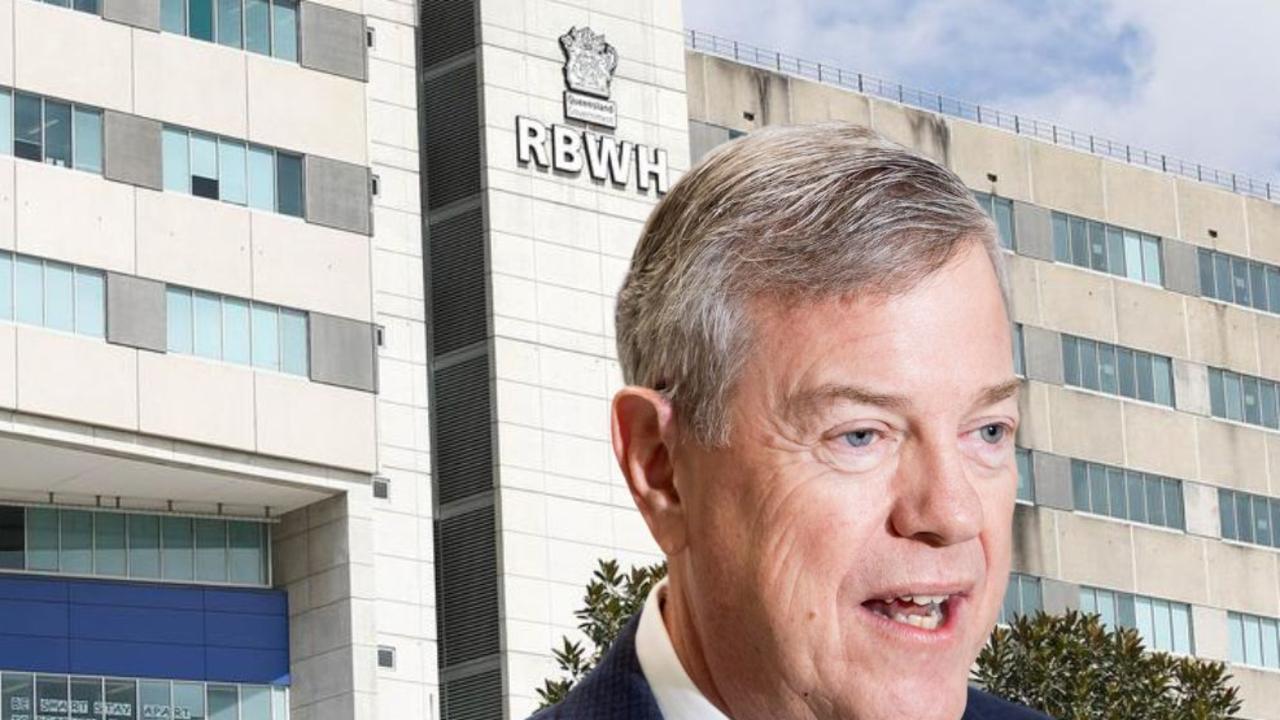Grundy’s, The Junk, The Big Stubby: Qld’s big things and iconic attractions that vanished
From The Big Stubby to much-loved amusement park Grundy’s, Queensland was once home to a number of iconic attractions. Enjoy a trip down memory lane with 30 closed attractions and find out what happened to them.
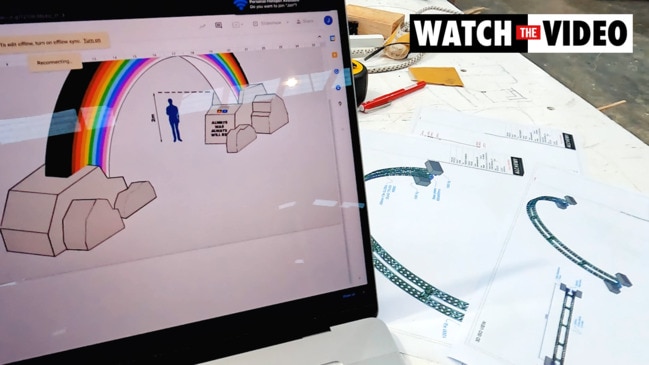
Local
Don't miss out on the headlines from Local. Followed categories will be added to My News.
Most people know Queensland by its iconic Great Barrier Reef and Gold Coast theme parks, but true Queenslanders know the Sunshine State was once home to equally iconic holiday destinations adored by locals.
From Grundy’s to Bullen’s African Lion Safari Park.
With more tourists and domestic travellers than ever flocking back to the white sandy beaches of Queensland since Covid-19, the sunny state was the nation’s best tourism performer in 2022 according to Tourism Research Australia, topping the country ahead of NSW and Victoria.
Figures show Queensland’s domestic tourism levels are above pre-pandemic levels, with popular visitor hot spots from the Sunshine Coast to the Whitsundays seeing a record-breaking $24.5 billion in domestic visitor spending in 2022.

But while Queensland tourism is thriving, the state has had its fair share of losses.
From big pineapples and massive cows to Sizzlers and wild water parks, the 1970s, 80s and 90s represented a boom era in Queensland tourist attractions, that sadly saw many local favourites demolished and abandoned in the 2000s to make way for other projects.
Take a trip down memory lane and see Queensland’s most well-loved ‘Big Things’ and famous attractions that have closed down.
READ MORE: BRISBANE’S MOST FAMOUS VANISHING ICONS
THE JUNK, MACKAY
Formerly Mackay’s tourist information centre, the green and yellow Taiwanese fishing boat ‘The Junk’ first landed in Mackay in 1976.
‘The Junk’ was among various other fishing junks that were found illegally poaching clams from the Great Barrier Reef.
Moved to the ‘City Gates’ or Colin Story Rotary Park at Nebo Road, The Junk was purchased by Whitsunday Wonderland Travel Council in 1985 and was transformed into an office and storage space.

Later, The Junk became an iconic attraction of Mackay, a short-lived maritime museum and part of the coastal town’s history before it was ultimately demolished in 1990 due to its deteriorating state and bad odour, locals stating you “could never remove the smell” of the former fishing boat.
THE BIG PINEAPPLE, GYMPIE

For more than three decades, Gympie was home to a 16-metre tall pineapple, located at the Caltex service station on Monkland St and Bruce Hwy, in competition with the nearby heritage-listed Big Pineapple in Woombye.
Constructed in 1971, moulds for the iconic Gympie Big Pineapple were made by the local WC Prongers and the golden attraction was opened just two months after the Sunshine Coast welcomed their own giant version of the fruit.
Serving as a meeting spot for the local community, the pineapple closed in 2008 after the site of the Caltex was redeveloped and moved 50m further up the Bruce Hwy.
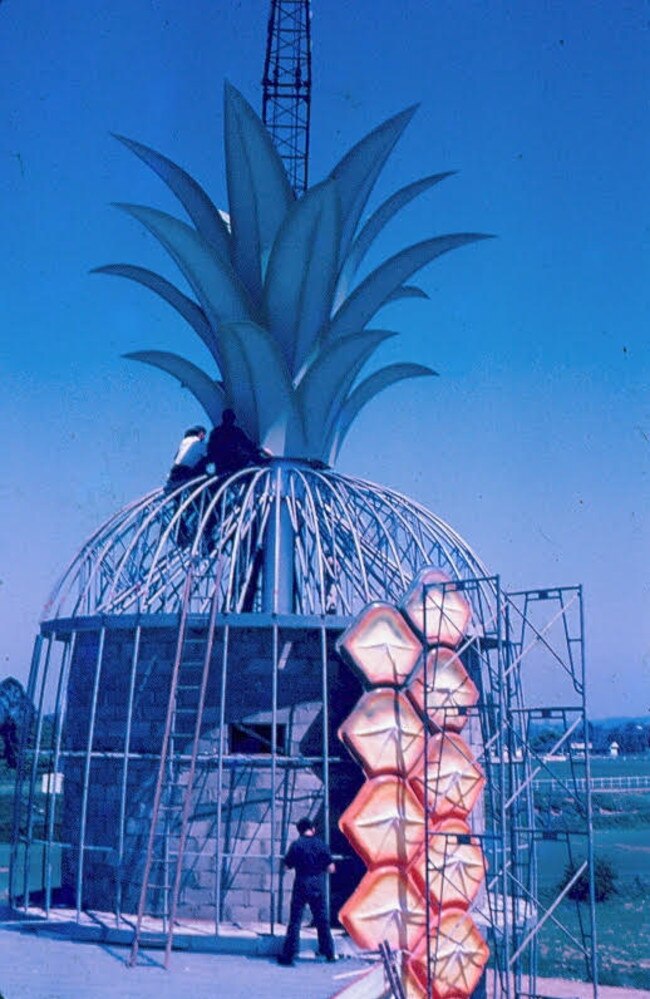
Parts of the giant pineapple are rumoured to be located in several locations across Gympie, with the crown of the pineapple located in a backyard at Imbil.
Locals and visitors of The Big Pineapple pay tribute to the golden fruit by sharing photos and memories on The Gympie Pineapple Memorial Group Facebook page.
THE HOUSE OF BOTTLES & THE BIG STUBBY, TEWANTIN

Dubbed Queensland’s “first big thing”, The Big Stubby was part of Tewantin’s House of Bottles & Bottle Museum, located in a rural town in The Shire of Noosa.
Constructed completely out of bottles, bottle tops and stubbies, the actual House of Bottles was constructed by George Clifford in 1966, a lighthouse keeper from Double Island Point who began to collect bottles that washed upon shore and built the museum out of 35,000 bottles at his wife Muriel’s suggestion.

In 1969, Clifford then constructed The Big Stubby, getting the help of locals and travellers to built the three-storey beer, tasking helpers to collect, sort and wash stubbies from Bulimba Brewery to make up the structure.
Complete with a spiral staircase and a 15-metre slippery side around the side, The Big Stubby was constructed using 17,000 stubbies and took five months to build, originally designed to look like a XXXX beer but later changed to a Bundaberg Ginger Beer.

Bathroom stalls known as ‘The Wee Stubbies’ or the ‘Little House of Bottles’ were constructed in 1975, complete with a ladies powder room and mens ‘gunpowder room’.
Purchased by Beryl Williams in the 1980s, the Bottle Museum which houses more than 10,000 bottles, some aged more than 2000 years old, closed in 2003 due to safety concerns over the concrete in the building’s structure becoming brittle.
The bottle collection was auctioned off in 1000 lots, with a commemorative Facebook page ‘House of Bottles & Bottle Museum 1966 – 2003’ run by Williams’ daughter, paying tribute to the iconic Tewantin tourist attraction.
CHERRY VENTURE, TEEWAH BEACH

An iconic attraction of Gympie, Cherry Venture was a 1600-ton Scandinavian cargo ship that was shipwrecked on Teewah Beach for 34 years after it crashed in 1973.
Originally built in 1945, the giant ship was travelling from Auckland to Brisbane when it was caught in a storm and wrecked on Teewah Beach, with the captain, 24 crew members and two monkeys on board all surviving.
1977 marked a failed attempt to refloat the ship after entrepreneur Peter Vagellas bought the boat with the intention of converting it into a luxury floating casino tourist attraction along the Great Barrier Reef.
Multiple refloating attempts failed in the years after, when in 1985, the propeller was removed and mounted as a monument at Rainbow Beach by the Rainbow Beach Business and Tourism Association.
A popular site for tourists travelling between Noosa and Fraser Island, the wreck was demolished in 2007 due to exposed asbestos in the engine room and increasing dangers due to its deteriorating condition.
Remains of the hull were exposed in both 2013 and 2018 following cyclones and storm surges, exposing the little that remained of the giant vessel.
MAGIC MOUNTAIN, NOBBY BEACH
Most Gold Coast locals will have memories of the iconic Magic Mountain, an infamous amusement park complete with multiple carousels, dodgem cars, a parachute drop tower, tram ride, castle and an iconic chairlift that started it all.
Built in 1962 by Page Newman, the amusement park originally began with just a chairlift that carried 40,000 people in its first year of operation.
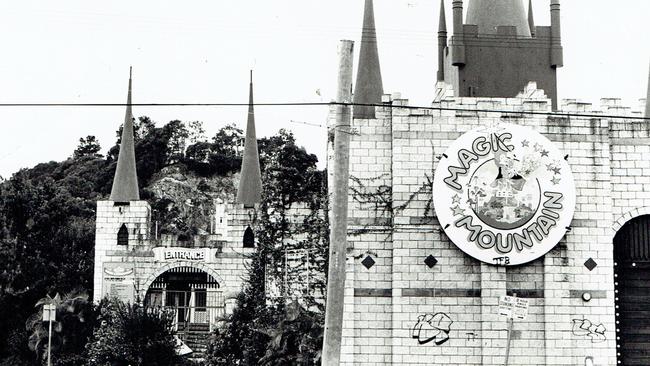
Sold to George Carrett in 1976, over the years the park introduced a range of different rides and exhibits, including a regular magic show by Arthur Coghlan.
Sold again in 1983, the amusement park closed in 1987 and remained a derelict site until 1991, during which the abandoned site was used as the shooting location of an episode of the Mission Impossible TV series in 1989, an episode appropriately titled ‘The Haunting’.

The site was officially demolished in 1991 and was turned into a selection of restaurants, shops and apartments named Magic Mountain Resort Apartments in a nod to its history.
A neighbouring street in the area is aptly named Chairlift Ave, with some of the chairlift poles from the amusement park still visible in the nearby Miami bushlands.
PALMERSAURUS, PALMER COOLUM RESORT

Billionaire businessman and United Australia Party chair Clive Palmer is well known for his ambitious business ventures, including when he attempted to transform Palmer Coolum Resort on the Sunshine Coast into an ultimate luxury resort experience, with hopes to build a casino, convention centre and most memorably, a dinosaur theme park.
Appropriately named ‘Palmersaurus’, the Queensland politician’s dinosaur park aimed to be the biggest in the world, with 160 life-size creatures that roared, moved and blinked at guests.

The dino-park journey began in 2012, with an 8.5m high, 20m long tyrannosaurus-rex named Jeff who stood at the ninth hole of the resort’s famous course, and even had his own Twitter page with a bio reading “10 metres tall, known to roar, love golf and Professor Clive Palmer’”.
Palmersaurus officially opened in 2013 when it began receiving negative reviews by people on TripAdvisor, some guests of the neighbouring resort guesthouses complaining of the audible roaring from the dinosaur replicas which were only separated from the luxury resort by a wire fence covered in green mesh.

Others commented on the costly admission fee at $100 for a family of five or $37.50 for individual adult entry, Palmer stating that “It’s a lot cheaper than going to Disneyland”.
In 2015, Jeff the T-Rex was burned down in an electrical fault, leaving just a metal frame, and the resort officially closed in 2015, putting 600 staff out of work and forcing Palmer to pay 310 unit holders their quarter shares in a $21m class action settlement in 2020.
SUPERBEE HONEY FACTORY, TANAWHA
Founded in 1968, the Tanawha Superbee Honey Factory was once a two-acre tourism facility along the Tanawha tourist drive near the Bellingham Maze, known by its slogan “it’s a honey of a place”.
Operating for 40 years, the attraction was once home to a Snow White themed cottage, ‘The House That Jack Built’, the Three Bears Cottage, electric cars, mini golf, a merry-go-round, a lagoon and a live beekeeping show that would educate visitors about bees and the honey-making process.

Once home to what many believe to be “Australia’s best honey”, the honey factory relocated to Forbes, New South Wales in 2008.
The Tanawha Superbee Honey Factory remains derelict and abandoned today.
NOSTALGIA TOWN, BLI BLI
Promising “a laugh at the past”, Nostalgia Town was once a Sunshine Coast popular tourism destination along David Low Way in Pacific Paradise, operating from 1990 before it was closed in 2003 and later sold for $1.6m in 2013 to be converted into apartments.
The 3.85ha site once boasted a scaled reproduction of an 1883 steam train that rode through areas including a dinosaur swamp and an Enchanted Tunnel complete with props and animatronics.
Visitors at Nostalgia Town could also enjoy the cemetery themed 18-hole Grave Yard Putt mini golf and Albert’s Incredible Time Machine, plus remote controlled boats, silent movies and mini cars.
HERVEY BAY SHARK SHOW, URGANGAN

Formerly a controversial attraction of Hervey Bay, Vic Hislop’s Shark Show was on the corner of The Esplanade and Elizabeth St in Urgangan and officially closed in 2016 after 30 years of operation.
Run by shark hunter Vic Hislop, the display was self-described as “the only show if its kind in the world” and included a shark and whale show, great white shark expo and overall educational experience about the sharp-toothed sea creatures.
With life-size model sharks out front and a large shark’s mouth upon entry, the biggest attraction of the show was the real five-metre great white shark that had been frozen and preserved along with three others inside the venue.

While some locals believe the shark show is a part of Hervey Bay’s history and educates the public about unpredictable nature of sharks, others have called the exhibit an attempt at “scaremongering”, with many visitors commenting on the “rotten smell” of the 30-year-old “defrosting” great white shark inside the museum.
Hislop closed the museum in 2016 due to personal reasons and the remaining external display of the iconic fibreglass shark out front was restored and relocated to Hervey Bay Historical Village and Museum after it was vandalised in 2018.

After an attempt to sell the frozen five-metre great white on Gumtree for $30,000 in 2015, Hislop was forced to bury the main attraction and the three remaining preserved sharks which were protected under Commonwealth legislation.
WILD WATERS FAMILY WATER FUN PARK, LOGAN

For more than 30 years the Hyperdome has been a major attraction of Logan, but prior to the introduction of the major shopping centre, the Loganholme site was home to Wild Waters Family Water Fun Park.
The park officially opened in 1982, with the opening ribbon cut by professional motorcyclist Gregg Hansford along with the park’s alligator mascot, opening eight green water slides, a 15-metre pool and a heated spa to the people of Logan.
The site was sold in 1984 and remained in operation until they began construction on the Hyperdome in 1988, the grand shopping centre opening a year later.
THE BIG SHELL, TEWANTIN

Built by the Andersons in the 1970s, The Big Shell was originally constructed as a six-metre concrete baler shell at the entrance of a property at 82 Gympie St, Tewantin.
The site along Gympie St once housed a coastal museum that played Hawaiian music upon entry and sold a range of souvenirs, marine displays, coloured sands, seashells and beach-themed items.
After nearly six decades of life, the property sold for $600k in 2019 and the privately owned property no longer boasts its eye-catching shell and is being used as a residential home.
BODEGA RESTAURANT, IPSWICH

Known for its iconic pouring wine bottle water fountain out the front, the Bodega Restaurant in Ipswich was once the hot spot for functions, with guests flooding in to hold their weddings, birthdays and parties at the iconic venue.
Established in 1973 and run by manager Doug Murdoch, the Bodega claimed to be a restaurant “with all the tradition, romance and poetry of sunny Spain” as well as offering cocktails like a Melodic Memory or Acapulco Moon.
While many locals know the venue best as the location of their wedding reception, 18th birthday or high school reunion, others remember the iconic restaurant along Brisbane Rd from when pranksters would fill the iconic wine glass water fountain with detergent, giving the appearance of an overflowing champagne glass.
The restaurant officially closed on May 28, 2002 and is now home to Italian and Mediterranean restaurant Casa Mia Ipswich.
THE BIG WHALE, KINKA BEACH

Fondly remembered as a popular excursion destination for local schoolchildren in the 80s and 90s, The Big Whale was once part of Coral Life Marineland in Kinka Beach, a well-loved Capricorn Coast attraction and former aquarium.
Located on 1059 Scenic Highway, the quirky building built by Kevin Logan measures at 12 metres long and six metres high, with an entrance consisting of large windows and a door located in the whale’s mouth.
Later used as a crystal and gift shop, The Big Whale is understood to have been closed to the public in the late 1990s, but still exists today, standing in an abandoned and derelict condition.
The building was purchased by Sierra Holdings QLD Pty Ltd in 2019.
ENDEAVOUR REPLICA, CALOUNDRA

Two thirds the full size of Captain Cook’s original HM Endeavour vessel, the 24-metre long replica was built by William Goodchild in 1975 after an application to Landsborough Shire Council to establish a maritime museum at Golden Beach.
The Endeavour replica overlooked the Glass House Mountains and stood next to a tourism attraction where visitors could enjoy a display of ships, a souvenir shop, art gallery and tea room, with kids encouraged to explore the tiny jail cell on the boat.
When the site was earmarked for a redevelopment for a multistorey resort in 1992, the replica was relocated next to the Waterfront Hotel in Bli Bli where it was later demolished in 2007 due to its deteriorating condition.
BULLEN’S AFRICAN LION SAFARI PARK, YATALA

An iconic tourist attraction of Logan in the 70s and 80s, Bullen’s African Lion Safari Park in Yatala was once a drive-through African safari experience where visitors could observe elephants, hyenas, lions and tigers from their cars.
Opened in 1969, the park was a popular attraction located between Brisbane and the Gold Coast and also included a safari shop and restaurant, bullock wagon rides, an animal nursery with deer, kangaroos and monkeys, as well as elephant, donkey and camel rides.
The park located three kilometres south of Beenleigh was no stranger to accidents, with multiple guests and staff members injured by the wild animals, including in 1973 when an attendant was dragged away by a lion and killed in front of a family and again in 1982 when a male guest was killed when he walked into a pride of lions.

Jumbo, the park elephant, was known to escape from the park to rummage through the local rubbish bins in suburban Beenleigh, however, town locals may argue that this was more than a one-time occurrence with rumours that the elephant once chased a lion out of the park that was never found.
In 1985, the African Lion Safari posted an advertisement in a local paper suggesting that more food may have been needed to feed its many animals, the ad reading “Free livestock removal service. Sick or injured cows and horses removed promptly, free of charge. Phone Bullens Lion Park.”
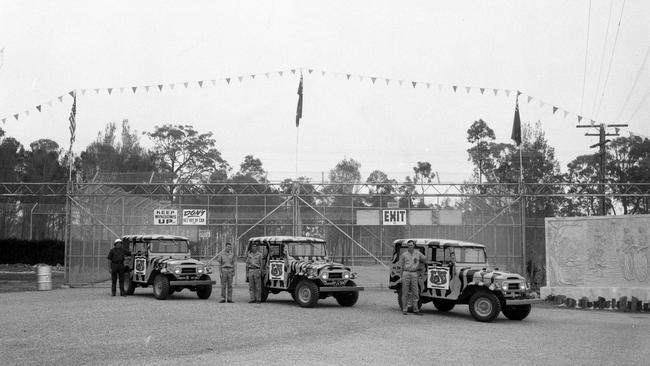
The 90ha park closed in 1988 after it cost too much to continue operating, with all the animals auctioned off.
Plans were originally in place to turn the former park into a Formula One Track but was later developed into an industrial estate which exists today, located along the appropriately named Lions Park Rd in Yatala.
Visitors of the adventurous tourist attraction continue to share their photos and stories from the park on the Memories of Bullens African Lion Safari Facebook page.
THE BIG COW, KULANGOOR

A Sunshine Coast tourism attraction for more than 40 years, the Big Cow was sculpted by Hugh Anderson, the man behind the Rockhampton Big Bulls, and famously stood at the entrance at what was formerly known as Sunshine Coast Dairy in Kulangoor since 1976.
Modelled after an Ayrshire cow, the big attraction named Ada, is seven times the size of its breed, inspiring the namesake of the road on which it sat on for four decades, Ayrshire Road.
Attracting visitors to the local dairy farm which was later known as Country World, the 7.9m high and 12m long cow was moved from the coastal dairy farm to the Highfields Pioneer Village Museum and Park just 18km north of Toowoomba in 2020 over concerns of its declining state.
The Big Cow had its official reopening in September 2020 and was renamed Clivia, after entrepreneur Clive Berghofer AM who donated funds to help remove and restore the iconic Ayrshire.
WARREGO WATER PARK, HAIGSLEA

Opened in the 1990s, Warrego Water Park was once an affordable and family friendly waterpark located on Warrego Hwy and Butlers Rd, Haigslea.
Costing only $13 for adults and $11 for children, the park featured big water slides and a kids pool with miniature slides and mushroom-shaped water features.
The park closed in the early 2000s, locals theorising the rising insurance costs and a drought that hit Queensland in the late 1990s was to blame.
REEF HQ GREAT BARRIER REEF AQUARIUM, TOWNSVILLE

The world’s largest living coral reef aquarium, Reef HQ Great Barrier Reef Aquarium first opened in June 1987 on Flinders St, Townsville, with an aim to educate visitors about Queensland’s Great Barrier Reef.
More than 35 years old, the national centre for tropical coral reef education was originally named The Great Barrier Reef Aquarium before it was changed to Reef HQ in 1999.
Also known as Great Barrier Reef Wonderland, the Townsville aquarium was closed in February 2021 after it was announced it would be refurbished in an $80.1m project involving the demolition of the neighbouring old IMAX dome theatre, arcade and cultural centre.
In November 2022 it was announced that the whole building would be demolished to create a new purpose built building with educational activities and hands-on experience.
Originally meant to re-open in 2023, the new coral reef aquarium run by the Great Barrier Reef Marine Park Authority is set to open in 2026.
THE BIG CAPTAIN COOK, CAIRNS

Looking over Cairns for more than 50 years was The Big Captain Cook, a 10 metre behemoth originally constructed in 1972 as a gimmick to attract visitors to the now demolished Captain Cook Motel.
Officially recognised as one of Australia’s ‘Big Things’, the monument on Sheridan St in Cairns features Captain James Cook, depicted with a right arm extended and an outstretched hand with the palm down.
Over its 50 years of existence, the statue couldn’t avoid its fair share of controversy, with a petition to knock down the statue receiving more than 10,000 signatures in 2020 in the height of the Black Lives Matter movement, petitioners arguing that the monument of the Australian colonial figure appeared to be doing a “Nazi salute”.
In January 2017 the statue also made headlines when a sign reading ‘SORRY’ was hung around its neck in reference to Invasion Day and Australia’s colonial history.
After the site of The Big Captain Cook was sold to James Cook University in 2022 to construct a medical research centre, businessman Martin Anton of Anton Demolitions bought the statue from the university for just $1.
The 9.7-metre figure was removed on May 24th 2022 and is believed to have been stored in a holding facility in Mount Molloy.
GRUNDY’S, SURFERS PARADISE
Marking a record attendance in its first week of opening in 1981 after 25,000 people bought tickets in one day, Grundy’s is an iconic venue of Surfers Paradise, well known for its four massive water slides that once dominated the Paradise Centre.
As well as its iconic water slides, Grundy’s was home to an alligator themed rollercoaster Go-Gator, a shooting gallery, a ghost train, an indoor mini golf course, dodgem cars and Charlie Cheese’s Pizza Playhouse, an Australian version of the iconic American pizza chain Chuck E. Cheese.
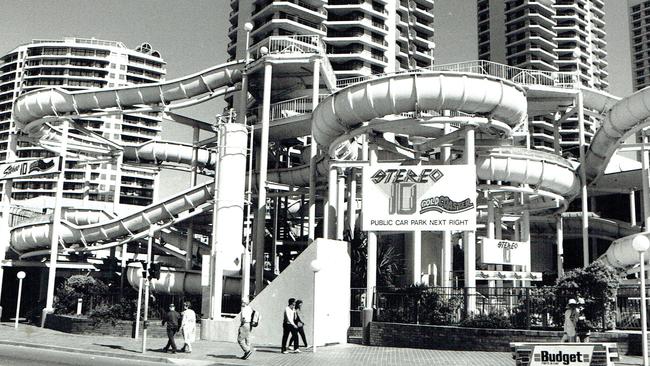
Introduced during the boom era of attraction parks in the 1980s and 90s, the theme park also gained popularity for featuring in the music video of Australian Crawl’s hit 1981 song, Errol.
After struggling with falling patronage, reduced income and high rents, the site closed in 1993 due to financial reasons, despite an urban myth that the park closed after razor blades were allegedly placed between joints in the slides, injuring children.
AQUATIC SUPER SLIDE PARK, NORTH ROCKHAMPTON

Hailed the ‘Disneyland of Rockhampton’, North Rockhampton Aquatic Adventureland also known as Aquatic Super Slide Park was a well loved Central Queensland party destination, open both day and night for guests to ride on the iconic waterslides.
Livio and Kerrie Piva built the park for $1.25m in 1982 which included three slides, a yellow 154m tube, a blue 133m tube and an orange 116m tube which was the fastest of the three.

Weighing 80 tonnes, the structure took four months to build and sat 21m high on 1 High St, North Rockhampton.
Home to the adorable mascot ‘Percy the Platypus’, keen guests could travel at speeds of up to 27km/h on the slides which were available to ride with entry costs starting at $3.
A popular spot in the 1980s, the park was sold and closed in 1986 to make way for new developments and is now the site of Rockhampton Hungry Jack’s.
FLOATING HOTEL, TOWNSVILLE
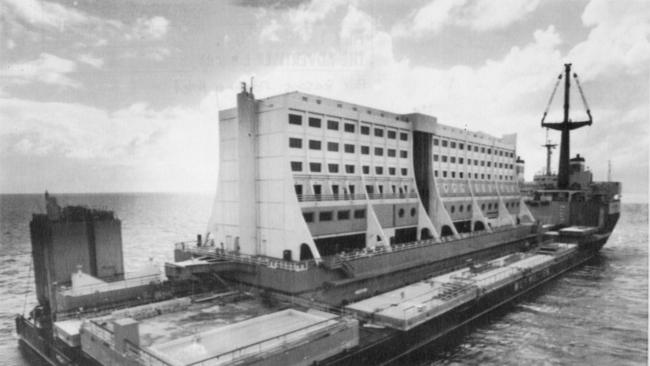
Townsville was once home to a luxury hotel that the world had never seen before – the world’s first five-star floating hotel which opened as Four Seasons Barrier Reef Resort 70km off the Townsville coast in 1988.
The brainchild of developer Doug Tarca, the seven-storey was made in Singapore and featured almost 200 rooms, swimming pools, bars, restaurants, nightclubs and a tennis court.
Dubbed a ‘floatel’, the 12,000 tonne floating hotel opened in 1988 over the John Brewer Reef after a rough opening following a tropical cyclone that delayed its public opening and sunk the underwater observatory and destroyed a guest transfer shuttle boat.
Within a year of its opening, bad weather and dwindling guest numbers made the luxury hotel too costly to operate and the floatel was sold to a company in Vietnam and renamed the Saigon Floating Hotel where it operated as a popular Vietnam luxury tourism destination until 1997.
After more financial trouble, the floating hotel was sold to North Korea in 1997 in North Korea’s Mount Kumgang Tourist Region on the border of South Korea as a North-South tourism experiment and symbol of co-operation between the two countries.
Opened in 1998, the hotel was renamed again to Hotel Haegeumgang but closed in 2008 after a South Korean tourist was allegedly shot and killed by a North Korean guard when she had reportedly wandered into a military area.
Sitting in North Korea for more than 20 years, in 2019 Kim Jong-un described the hotel as “shabby” with “no national character at all”
It is believed that dismantling of the floating hotel commenced in March 2022.
OLYMPIA THEME PARK, ALEXANDRA HEADLAND

First opened in 1986, Olympia Theme Park was originally built and designed by Andrew and Anna Vizis who introduced the seven-slide water park to Alexandra Headland at the persistence of their grandchildren.
Designed by Andrew who worked as a mechanical engineer, the amusement park originally opened as ‘Pacific Super Slide’ before it was sold in 1988 and renamed Olympia Theme Park by the new owners.
Built on the corner of Okinja Rd and Wirraway St, the $1.5m complex included its iconic water slides, a solar heated pool, a video games room and family picnic area.
The park was closed and demolished in 2006 to make way for luxury apartments.
TOP SHOTS FUN PARK, MAROOCHYDORE
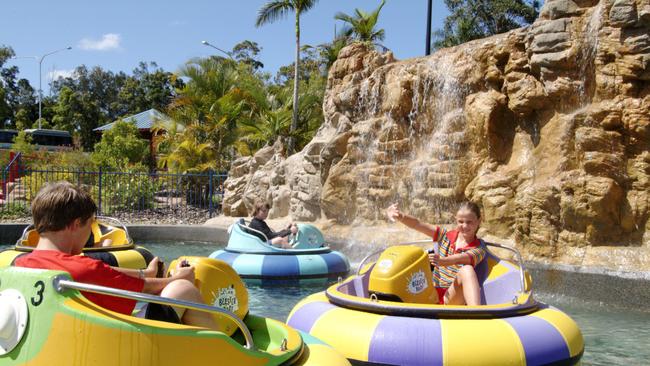
Operated by Barry and Bev Higgins, Top Shots Fun Park, in Maroochydore, opened in 2001 and offered an abundance of family-friendly fun before its closure in 2017.
Located near the corner of Maroochydore Rd and Sunshine Mwy, the 7934sq m property included an 18-hole mini golf course, a climbing wall, a vertical trampoline, arcade games, and an inflatable ‘Blue Crush’ water slide among other water-based activities.
The place of many local birthday parties and summer days out, the park announced its closure in 2016 and officially shut the doors in January 2017 to make way for a 40-home townhouse development.

Over its 16-year life, the fun park saw famous visitors including Wally Lewis, Alfie Langer, Chris Vermeulen and the Irwin family.
BAYERSVILLE ZOO AND WHITSUNDAY WATER SLIDE, MACKAY

Mackay locals will remember Bayersville Zoo, a privately owned zoo run by the Ayers family which housed a variety of creatures, including Indian porcupine, American bobcat, hyenas and a cheeky monkey that would frequently steal visitor’s peanuts and handbags, and well remembered for pulling children's hair.
Moving to the two hectare property in 1947, Beth and Philip Ayers operated the Harbour Rd property as a dairy farm, stud piggery and butcher before being granted a B Class zoo licence and opening Bayersville Zoo circa 1960, named after Beth Ayers herself.

Members of the Have you seen the Old Mackay Facebook page have shared their memories of the iconic zoo, detailing stories of the zoo’s iconic Hall of Mirrors, rare albino kookaburra and Percy the Pelican who would bite and chase visitors of the zoo.
Sold to John Hannay in 1979 after three decades of operation, the zoo closed in 1983 after insufficient attendance and was later changed into Mackay Water Slide, run by Ian and Donna Hehir in the 1990s.

The popular water slide which reportedly included a mini golf course, go-kart track and cane toad races was later renamed Whitsunday Water slide and then Tunzafun Water Park before it was dismantled in 2002 to make way for a sports centre.
GONDWANA RAINFOREST SANCTUARY, BRISBANE

Opened in June 1992, the Gondwana Rainforest Sanctuary was a hollow natural amphitheatre located in South Bank parklands that was home to 500 animals, including a huge bird aviary with various species including curlews, parrots, cockatoos and lorikeets.
Featuring waterfalls, boardwalks and bridges, the Australian wildlife sanctuary also featured Australian marsupials and reptiles like lizards, wallabies, koalas and snakes, plus display dioramas including life-size animated dinosaurs and crocodiles.
Established by the Joffe Group, the riverside sanctuary included an educational exhibit of prehistoric rainforest fossils which aimed to educate people about rainforest conservation.
The tourist attraction officially closed in 1998.
AUSTRALIAN WOOLSHED, FERNY HILLS

Half an hour northwest of Brisbane, the Australian Woolshed at 148 Samford Rd, Ferny Hills was formerly a wildlife attraction known for its sheep shows, animal exhibits and water slides.
Opened by Dirranbandi farmer Ken Mander-Jones in 1982, the 22-acre facility was designed to mimic a traditional outback sheep station and had a range of offerings to visitors including wool-spinning exhibitions, sheepdog performances and mini golf.
The tourist attraction also included a 350-seat dining area, picnic area and an iconic selection of waterslides.

Running 1000 sheep shows annually, the Woolshed closed in 2006 and was redeveloped into a housing estate.
The waterslides were sold on Gumtree, with one of the 50-metre water slides featured in the backyard of a property at 9 Parakeet Crt, Warner which was installed by the former owner in the backyard.
CAIRNS TROPICAL ZOO, CAIRNS
Opened in 1980, Cairns Tropical Zoo along the Captain Cook Hwy in Palm Cove was one of Cairns’ oldest wildlife attractions until its closure in March 2016 after it was sold to a local developer.
Once the largest wildlife collection in Far North Queensland, the six-hectare zoo was home to crocodiles, alligators, Komodo dragons, cassowaries, dingoes and more, holding bird shows, crocodile viewings and kangaroo enclosures where you could hand feed the native animal.

Visitors could also purchase a photo holding animals such as a koala, baby alligator or snake for $20.
Operated by the Freeman family for more than 35 years, Peter and Angela Freeman managed the zoo for the last 16 years that in ran and continue to operate the nearby Hartley’s Crocodile Adventures in Wangetti and the Kuranda Koala Gardens and Birdworld Kuranda.
Located in the middle of a suburbia, the Freemans decided to close the zoo to focus on their other locations as the zoo increasingly became more of a residential area.
The site of the zoo remains abandoned and derelict on Captain Cook Hwy, Palm Cove today with no major works started by developer Heavey Lex Pty Ltd who purchased the property for $3.15m in 2015.
SIZZLER, VARIOUS LOCATIONS

Known for their all you can eat salad bars and iconic cheese toasts, Sizzler was once a well-loved restaurant chain throughout Queensland and Australia, offering a range of steak, chicken and pasta dinners.
The first Australian Sizzler opened in Annerley in 1985 by Collins Foods, a parent company who also operates Taco Bell and KFC.
Popular throughout the late 80s and 1990s, Sizzler became a cultural phenomenon throughout the state and opened a number of popular stores in Loganholme, Mermaid Beach, Toowoomba and Ipswich.
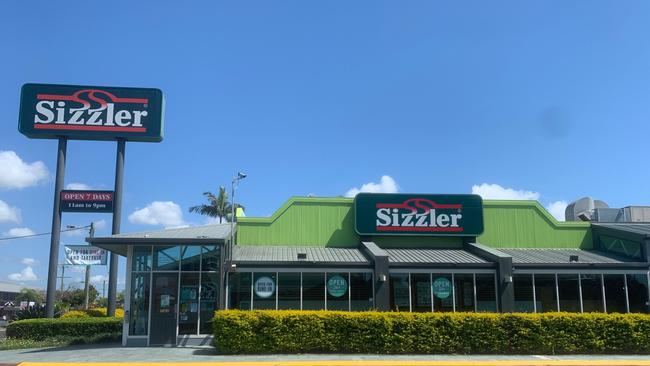
However, declining patrioange numbers saw the decline in stores which skyrocketed after the COVID-19 pandemic and saw the last remaining Sizzlers closing down in 2020.
After 35 years, the final Sizzlers to close their doors were in Mermaid Beach, Loganholme, Toowoomba, Maroochydore and Caboolture on November 15, 2020.
The store closures saw 600 employees given redundancy packages or new roles at KFC or Taco Bell.
UFO GARAGE AND FANTASYLAND, YATALA

It would be hard for commuters on the Pacific Hwy to miss this iconic gem in Yatala, a ‘spaceship servo’ that consists of a service station, home to its very own UFO and amusement park titled ‘Fantasyland’.
Opened circa 1971, the roadside destination was home to Tramburger, a fast food restaurant constructed from two old Brisbane trams along with various attractions, including a space ship, amusement park slide, teacup ride, a tractor ride, mini golf and trampolines.
The eye-catching site was demolished in the 1980s and is now the home of the Burnside Tavern.
Have we missed any? COMMENT BELOW
READ MORE: DREAMWORLD ATTRACTIONS THAT HAVE CLOSED
READ MORE: QUEENSLAND’S ABANDONED RESORTS
Originally published as Grundy’s, The Junk, The Big Stubby: Qld’s big things and iconic attractions that vanished

